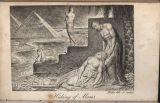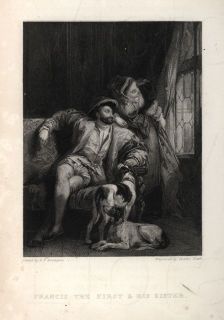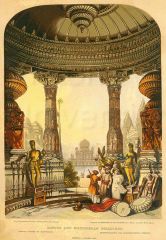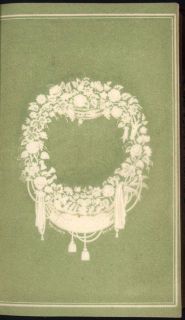Case 3: Technological AdvancesAs the number of annuals produced each year increased, so too did pressure to offer purchasers volumes which incorporated the latest technological advances. The introduction of steel-plate engravings in the early 1820s enabled the genre to develop its distinctive emphasis on prints, and engravings were usually commissioned long before the literary contributions. Counterintuitively, then, an annual's literary selections were often written to illustrate engravings, not vice versa. As the poet William Wordsworth wrote in March 1828: "Steel engraving has given birth to these Publications." The annuals' emphasis on images and visual delight encouraged technological innovation in the field of printing, and many of the first widely commercial uses of new printing techniques can be seen in the pages of annuals. Techniques such as embossed color printing and George Baxter’s revolutionary oil color printing process were integrated into the increasingly lavish pages of the annuals shortly after they were invented. Though, as many critics suggested, the literary content of annuals became predictable, the extra-literary elements continued to meet and raise the aesthetic expectations of the public.
Items No. 12 and No. 13: Steel-plate Engraving While copper-plate engravings, like William Blake's intaglio engraving "Hiding of Moses," were sometimes used in early annuals, they had a tendency to wear rapidly, causing details to fade. Steel-plate engravings, which were first used to illustrate books in 1822, revolutionized the inclusion of images in books. Soon, steel engravings became the primary method of producing illustrations for annuals. Steel engravings, like this one by Charles Heath, could be printed in exquisite detail while retaining their integrity after thousands of impressions. |
|
 [click image to enlarge] |
 [click image to enlarge] |
|
Items No. 14 and No. 15: Color Printing The engraver, printer, and lithographer George Baxter invented a process to produce color prints with vivid oil-based paints. Using wood and metal color blocks in conjunction with steel key plates, Baxter was able to produce elaborately colored images at a relatively low cost. Beginning in 1834, his process was used to print frontispieces for annuals. The two images here, one from Fisher's Drawing Room Scrap-Book and the other an unbound print, are slight variations of the same print: "Hindoo and Mahomedan Buildings." The print also appeared in other annuals such The Parlour Table Book and Gallery of Modern British Artists. Some contemporaries, such as William Makepeace Thackeray, claimed that technology was being used to portray false novelty. Thackeray attacked Fisher's Drawing Room Scrap-Book, describing it as the pictorial equivalent of "a sea-pie, made up of scraps that have been served at many tables before." Advocates of new printing technologies, however, celebrated their ability to give the public unprecedented access to reproductions of works by prominent artists. |
|
 [click image to enlarge] |
 [click image to enlarge] |
Item No. 16: Embossed Printing This presentation plate from The Gem for 1829, like Item No. 8, is an example of cameo embossing and dual color printing. Sir William Congreve developed the technique in 1819 to combat forgery of bank-notes and official documents, though it only began to be used for commercial printing in 1826. He yielded the patent to the firm of Whiting, whose imprint appears at the bottom of the wreath in this image. The appearance of cameo embossing in the Forget Me Not and The Gem speaks to how it was imperative for the annuals to remain at the cutting edge of aesthetic and technological display. |
|
 [click image to enlarge] |
|
| < Previous | Next > |
